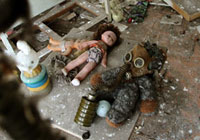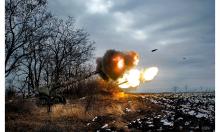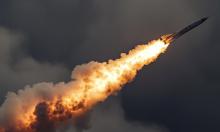Five places on Earth incompatible with life
1. Chernobyl, Ukraine

The fallout from the world’s worst nuclear power accident continues to accumulate, affecting as many as 5.5 million people and leading to a sharp rise in thyroid cancer. The incident has also blighted the economic prospects of surrounding areas and nations due to their agricultural heritage.
2. Sumqayit, Azerbaijan
Yet another heir to the toxic legacy of Soviet industry, the city of 275,000 souls bears heavy metal, oil and chemical contamination from its days as a center of chemical production. As a result, local Azeris suffer cancer rates 22 to 51 percent higher than their countrymen and their children suffer from a host of genetic defects ranging from mental retardation to bone diseases.
3. Vapi, India
This town at the end of India’s industrial belt in the state of Gujarat houses the dumped remnant waste of more than 1,000 manufacturers, including petrochemicals, pesticides, pharmaceuticals and other chemicals. “The companies treat wastewater and get most of the muck out,” Hanrahan says. “But there’s nowhere to put the muck, so it ends up getting dumped.”
4. Tianying, China
The center of Chinese lead production, this town of 160,000 qualifies as one of the eight most polluted areas in the country, according to the Chinese government. Lead concentrations in the air and soil are 8.5 to 10 times above national health standards and lead dusts local crops at levels 24 times higher than such health standards.
5. Sukinda, India
Home to one of the world’s largest chromite mines—used to make steel stainless, among other things—and 2.6 million people, the waters of this valley contain carcinogenic hexavalent chromium compounds courtesy of 30 million tons of waste rock lining the Brahmani River. “Hexavalent chromium is very toxic and very mobile,” notes David Hanrahan, Blacksmith’s London-based director of global programs.
Source: The List Universe
Subscribe to Pravda.Ru Telegram channel, Facebook, RSS!





